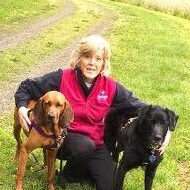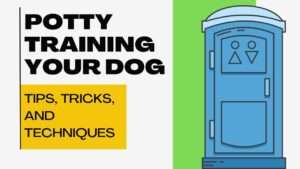Are you a proud new puppy parent looking to lay the foundation for a well-behaved furry friend?
Congratulations!
Welcoming a puppy into your home is an exciting journey filled with love and joy.
Unlock the secrets to harmonious companionship and joyful obedience with expert guidance in mastering puppy training.
Contents Overview
Preliminary Summary
Training your dog is key for a well-behaved companion. Here are ten essential commands:
- Sit: Promotes calmness and attentiveness.
- Stay: Builds patience and self-control.
- Come: Ensures safety and responsiveness.
- Down: Encourages relaxation and submission.
- Heel: Fosters leash manners and attentive walking.
- Leave it: Prevents unwanted behaviors and hazards.
- Drop it: Promotes cooperation and prevents resource guarding.
- Off: Establishes boundaries and discourages jumping.
- Wait: Cultivates patience and impulse control.
- Watch me: Strengthens focus and engagement.
1- Start Early, Start Right
Begin training your puppy as soon as you bring them home. The early weeks and months are critical for shaping their behavior and establishing routines. Consistency is key to success.
Key Points
- Begin training as soon as you bring your puppy home to establish good habits early on.
- Introduce your puppy to their new environment gradually to prevent overwhelm.
- Implement a consistent daily routine for feeding, potty breaks, playtime, and sleep.
- Encourage positive associations with experiences like grooming, handling, and car rides.
- Enroll your puppy in puppy kindergarten or obedience classes to socialize and learn basic commands.
2- Positive Reinforcement
Use rewards like treats, praise, and affection to encourage good behavior. Positive reinforcement creates a strong bond between you and your puppy and makes learning fun for them.
Key Points
- Use high-value treats, praise, and toys to reward your puppy for desired behaviors.
- Ignore or redirect unwanted behaviors instead of using punishment or harsh corrections.
- Consistently reward your puppy immediately after they perform the desired behavior.
- Use a marker word like “yes” or a clicker to signal the exact moment your puppy does something right.
- Keep training sessions short and positive to maintain your puppy’s enthusiasm and focus.
3- Basic Commands
Teach essential commands such as sit, stay, come, and down. These commands not only make daily life easier but also ensure your puppy’s safety in various situations.
Key Points
- Teach simple commands like “sit,” “stay,” “come,” “down,” and “leave it” using positive reinforcement.
- Break down each command into small, achievable steps to prevent frustration.
- Practice commands in different environments and gradually increase distractions to reinforce learning.
- Be patient and consistent with your cues and expectations during training sessions.
- Always end training sessions on a positive note, even if progress is slow.
4- Socialization
Introduce your puppy to different people, animals, environments, and experiences from a young age. Socialization helps prevent fearfulness and aggression and promotes confidence and friendliness.
Key Points
- Expose your puppy to a variety of people, animals, sounds, and environments during their critical socialization period (between 3 to 14 weeks).
- Arrange playdates with other vaccinated and friendly dogs to promote positive interactions.
- Use caution when introducing your puppy to unfamiliar stimuli and monitor their body language for signs of fear or discomfort.
- Gradually expose your puppy to different surfaces, textures, and experiences to build confidence.
- Reward your puppy for calm and relaxed behavior during socialization outings.
5- House Training
Establish a consistent schedule for potty breaks and crate training. Supervise your puppy closely indoors and reward them for eliminating in the appropriate area. Accidents are part of the learning process, so be patient and avoid punishment.
Key Points
- Establish a consistent schedule for feeding, potty breaks, and bedtime to regulate your puppy’s elimination habits.
- Supervise your puppy closely indoors and take them outside frequently, especially after eating, drinking, or napping.
- Use a designated potty area in your yard and reward your puppy immediately after they eliminate there.
- Clean up indoor accidents promptly and thoroughly to remove lingering scent markers.
- Consider crate training or using a confinement area when you can’t supervise your puppy to prevent accidents.
6- Chewing and Biting
Puppies explore the world with their mouths, so provide appropriate chew toys and redirect undesirable chewing behavior. Discourage biting by yelping softly and withdrawing attention when your puppy bites too hard.
Key Points
- Provide a variety of safe and durable chew toys to satisfy your puppy’s natural urge to chew.
- Redirect inappropriate chewing behavior by offering an approved chew toy and praising your puppy for chewing on it.
- Use bitter apple spray or deterrents on furniture and other forbidden items to discourage chewing.
- Teach bite inhibition by yelping or saying “ouch” in response to puppy nipping and withdrawing attention briefly.
- Avoid rough play or encouraging behaviors like chasing hands or feet that may escalate into biting.
7- Leash Training
Introduce your puppy to wearing a collar and leash gradually. Start with short, positive walks, rewarding them for walking calmly by your side. Teach them to respond to gentle leash pressure and to follow your lead.
Key Points
- Introduce your puppy to a collar and leash gradually, allowing them to sniff and explore the equipment.
- Use treats and praise to reward your puppy for walking calmly beside you on a leash.
- Start leash training in a quiet, familiar environment before gradually introducing distractions.
- Use positive reinforcement to encourage your puppy to focus on you and maintain a loose leash.
- Be patient and consistent with leash training, reinforcing good behavior and redirecting pulling or lunging.
8- Basic Manners
Teach your puppy to greet people politely, not to jump on furniture without permission, and to wait patiently for meals and treats. Consistency and positive reinforcement are key to instilling good manners.
Key Points
- Teach your puppy to greet people politely by sitting instead of jumping up for attention.
- Encourage your puppy to wait calmly for meals, treats, and attention by using the “wait” command.
- Practice “leave it” and “drop it” commands to prevent resource guarding and encourage sharing.
- Reinforce good manners during everyday interactions by rewarding calm and polite behavior.
- Use gentle redirection or time-outs to discourage undesirable behaviors like excessive barking or begging.
9- Training Sessions
Keep training sessions short, frequent, and fun to maintain your puppy’s focus and motivation. Aim for multiple short sessions throughout the day rather than one long session.
Key Points
- Keep training sessions short (5-10 minutes for puppies) to prevent your puppy from becoming bored or frustrated.
- Use a variety of training techniques and activities to keep your puppy engaged and motivated.
- Incorporate play and mental stimulation into training sessions to make learning fun for your puppy.
- End training sessions on a positive note with a favorite game or treat to reinforce good behavior.
- Be consistent with your training schedule, aiming for several short sessions throughout the day.
10- Patience and Persistence
Remember that every puppy learns at their own pace, so be patient and consistent in your training efforts. Celebrate small victories and be prepared to adapt your approach based on your puppy’s progress and individual needs.
Key Points
- Understand that training takes time and that every puppy learns at their own pace.
- Be patient and avoid becoming frustrated or angry during training sessions.
- Celebrate small victories and progress, even if it’s slower than expected.
- Stay consistent with your training methods and expectations to avoid confusion.
- Seek guidance from a professional trainer or behaviorist if you encounter challenges or need additional support.
Bottom Line
According to an authentic research report, smaller dogs’ obedience largely hinges on owners’ commitment to training and the value they place on obedience. Consistent training, regular engagement in activities, and ample use of rewards contribute to better obedience in smaller breeds.
Remember that training is an ongoing process that requires dedication, patience, and love. With time and consistency, you’ll witness your puppy grow into a well-adjusted adult dog who brings endless joy to your life.
Happy training!
Now, go ahead and embark on this exciting journey with your furry friend by your side. With the right approach and plenty of love, you’ll create a strong bond that lasts a lifetime.






























+ There are no comments
Add yours